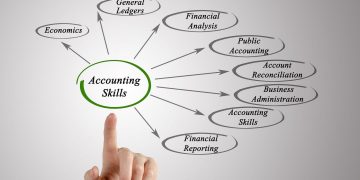HR Organizational Chart and Department Structures
Every organization, no matter its size, thrives on structure, and the HR department is no exception. An HR organizational chart outlines the hierarchy and roles within this essential team, ensuring clarity and efficiency.
When paired with well-designed HR department structures, businesses can better manage talent, streamline communication, and align HR goals with company objectives.
In this blog, we explore the importance of HR organizational charts, their typical structures, and how they support the organizations growth. So, whether you’re a growing startup, or a large enterprise, understanding these concepts is key to building a cohesive and productive HR team.
What is an HR Organizational Chart?
An HR Organizational chart is a visual representation that outlines the structure of a company’s human resources department. It illustrates how roles and responsibilities are distributed across the department, showing who reports to whom and how teams are interconnected. The chart can include HR functions like recruitment, employee relations, payroll, learning and development, and compliance.
Effective HR organizational charts must also align with organizational design principles to adapt to different business environments.
For businesses, an HR organizational chart ensures clarity in processes and workflows, making it easier to understand how decisions are made and who handles specific tasks. For employees, it provides transparency, helping them to identify the right point of contact for HR related queries.
The chart is beneficial for building collaboration and improving communication within the HR team and across the organization.
By defining roles clearly, companies can streamline their HR operations, ensuring that every team member knows their responsibilities. Ultimately, it helps HR departments operate more efficiently and contribute to organizational success.
Why do HR Department Structures matter?
HR department structures are important because they form the backbone of an organization’s workforce management.
A well-organized HR structure ensures that roles and responsibilities are clearly defined, which helps with streamlining communication and prevents an overlap in duties. It helps employees know whom to approach for specific needs, whether its payroll inquiries, conflict resolution, or professional development.
For organizations, an efficient HR structure improves decision making and prompts accountability by assigning specialized functions like recruitment, employee relations, and compliance to dedicated teams.
It also supports scalability, enabling businesses to adapt to growth or change with minimal disruption. By promoting clarity and efficiency, HR structures contribute to a healthier workplace culture and increased productivity.
What are the common HR Department Structures?
HR department structures can vary depending on the size, goals, and needs of an organization. However, there are a few common structures found across industries.
The centralized structure places all HR functions under one department, creating consistency and efficiency in policies and practices. This approach works well for smaller organizations or those with centralized decision making processes.
In contrast, a decentralized structure divides HR responsibilities across multiple departments or locations, offering flexibility and tailored solutions to meet the unique needs of different teams. This model suits larger companies or those with diverse operational units.
Another popular structure is the matrix model, where HR specialists work closely with managers across departments to support specific needs while maintaining alignment with overall company policies. This fosters collaboration and shared responsibility for workforce development.
By choosing the appropriate HR structure, organizations can ensure smoother operation, better employee support, and improved alignment with business goals.
How to design an HR organizational chart for small businesses
Designing an HR organizational chart for a small business requires simplicity and clarity. Start by understanding the key HR roles essential to your business.
For small businesses, you might only need a few roles, such as an HR manager, a payroll specialist, and a recruiter. If resources are limited, one person may handle multiple responsibilities.
At the top of the chart, place the business owner or CEO, followed by the HR manager who oversees all HR operations. Beneath the HR manager, list roles like recruitment, employee relations, and payroll. Keep the structures streamlined, focusing on the most critical functions.
For startups, or very small teams, consider using an outsourced HR consultant or a part-time HR professional. Ensure that the chart reflects reporting relationships clearly, so employees understand who to contact for specific needs. A well-organized HR structure even for small businesses promotes efficiency and supports growth.
When creating an HR organizational chart for a small business, it’s essential to keep the structure flexible. Small businesses often grow and evolve rapidly, so the chart should be easy to update as roles evolve.
Remember to include room for potential future positions to plan ahead for growth. Using online tools or software to design the chart can make the process more efficient and visually clear, ensuring your team has a solid understanding of reporting lines and responsibilities.
How can HR Organizational Charts evolve with company growth?
HR organizational charts naturally evolve as a company grows, reflecting changes in size, structure, and strategic priorities. In small startups, these charts are often simple, showing a handful of roles where employees wear multiple hats.
As the company expands, specialization increases, and the chart becomes more layered, with clear divisions for HR functions like recruitment, employee relations, training, and payroll.
Growth demands creating middle management layers to oversee specific teams and facilitate better communication. New positions, such as HR strategists or compliance officers, may be introduced to meet organizational needs.
Regularly updating the chart ensures it stays relevant, aligning with the company’s objectives and workforce changes. A well maintained HR organizational chart not only supports efficiency but also boosts transparency, helping employees to understand roles and reporting structures.
Conclusion
Designing an effective HR organizational chart is vital for businesses of all sizes to clarify roles, improve communication, and support growth. Whether it’s a small business requiring a flexible structure, or a larger organization with complex department needs, an HR chart is a foundation for success.
For those seeking expert guidance, Procapita Group offers tailored HR advisory services. With extensive experience across industries and NGOs, Procapita ensures that businesses receive exceptional HR solutions that drive efficiency. Learn more about their comprehensive HR consulting services.














